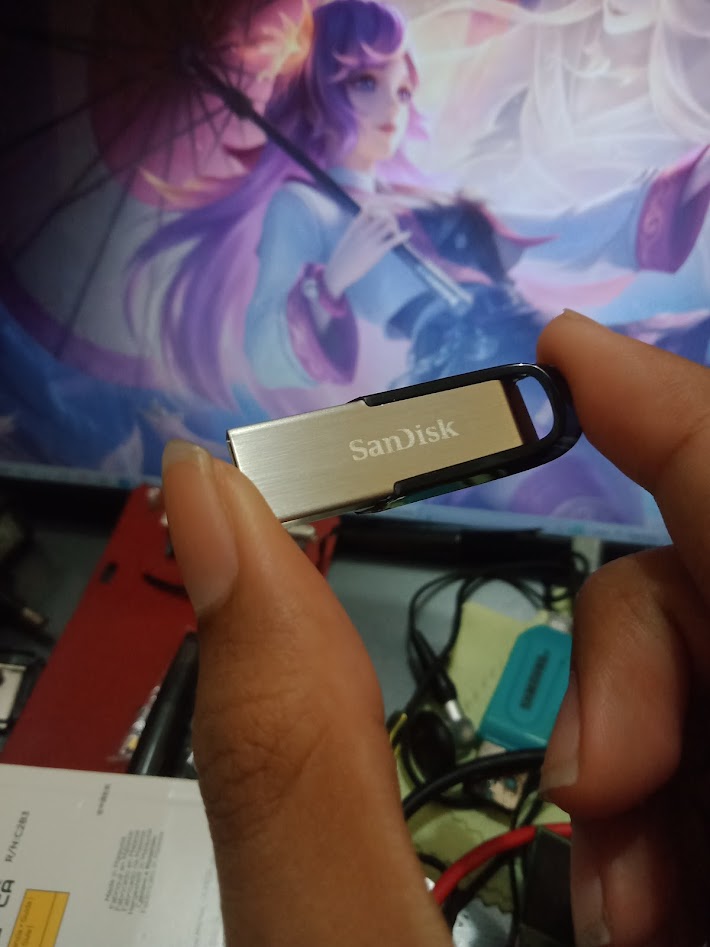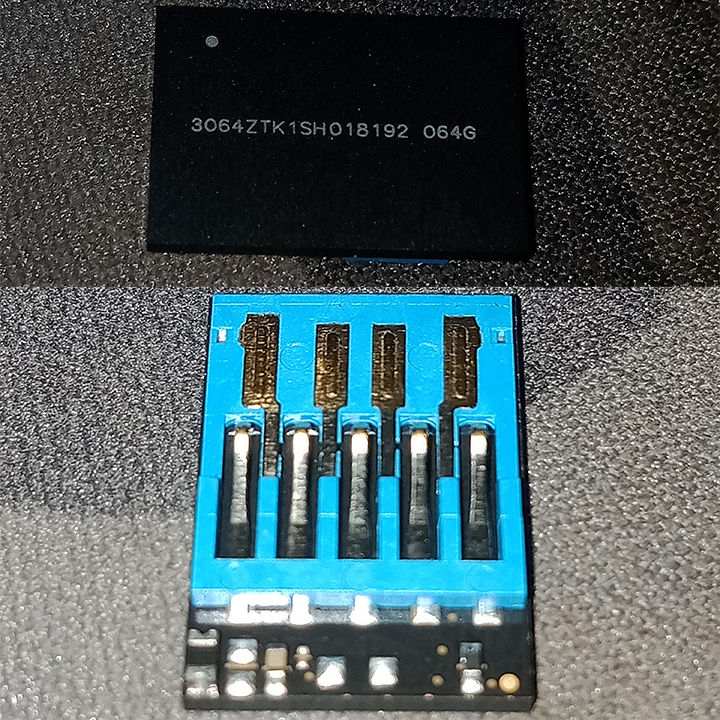Comparing: SK hynix H9TQ27ADFTMC vs SanDisk Ultra Flair 64GB
In this comparison, we analyze two Disks: SK hynix H9TQ27ADFTMC and SanDisk Ultra Flair 64GB, using synthetic benchmark tests to evaluate their overall performance. This side-by-side comparison helps users understand which hardware delivers better value, speed, and efficiency based on standardized testing. Whether you're building a new system or upgrading an existing one, this benchmark-driven evaluation offers valuable insights to guide your decision.

SK hynix H9TQ27ADFTMC
| Type: | Disks |
|---|---|
| Model: | SK hynix H9TQ27ADFTMC |
| Capacity: | 32GB |
| Interface: | eMMC |

SanDisk Ultra Flair 64GB
| Type: | Disks |
|---|---|
| Model: | Ultra Flair 64GB (CZ73) |
| Capacity: | 64GB |
| Interface: | USB 3.0 |
Specification Comparison Table
This specification comparison presents technical details of several devices or components to help you understand the key differences between each option. Use this table as a reference to determine which device best suits your needs.
| Specification | SK hynix H9TQ27ADFTMC | SanDisk Ultra Flair 64GB |
|---|---|---|
| Brand | SK hynix | SanDisk |
| Format | eMMC 5.1 | USB FlashDrive |
| Capacity | 32GB | 64GB |
| Interface | eMMC | USB 3.0 |
Submission Comparison Table
This submission comparison table displays the number and details of benchmark data submissions from various devices or components. This information helps you understand the performance based on the benchmarks that have been tested, as well as providing an overview of the consistency and popularity of the available benchmark results.
Submission Comparison Chart
This chart visualizes the benchmark scores comparison between two hardware devices based on submitted data.
Media Gallery
A collection of photos of tested hardware. These images can help you identify the physical form, model, and variant of the hardware in question. These photos are from our own documentation, and if they are not available we may not be able to document them.
About Hardware SK hynix H9TQ27ADFTMC
SK hynix H9TQ27ADFTMC is an eMMC (embedded MultiMediaCard) based storage chip designed for mobile devices and embedded systems. With NAND Flash technology, it offers an efficient and power-efficient internal storage solution for devices with light to medium computing needs. It has become a common choice in entry-level smartphones, tablets, and Internet of Things (IoT) devices, thanks to its combination of sufficient capacity, high endurance, and long-term stable performance.
As an internal chip, the H9TQ27ADFTMC comes in a small yet reliable package, combining the controller and flash memory in a single unit for easy integration in consumer devices. One of the main advantages of eMMC storage like this is low power consumption and better data access latency compared to traditional SD card-based storage.
The test was conducted on an OPPO A5s device, a smartphone with a MediaTek Helio P35 (MT6765) processor, 3GB of RAM, and 32GB of internal storage. The operating system used was Android 8 with the ColorOS 5.2 interface. The test was conducted after the device had been in use for more than four years, so performance results may have decreased due to NAND Flash degradation over time.
In testing using the Cross Platform Disk Test (Mobile), the read speed of 114.31 MB/s and write speed of 13.07 MB/s were obtained. These results show that despite its age, the eMMC's read performance is still quite good for activities such as opening applications, loading the system, and streaming light content.
As a first-in-class internal storage solution, the SK hynix H9TQ27ADFTMC is suitable for devices that require fixed (non-removable) internal storage capacity with high efficiency, low cost, and sufficient endurance for daily use. Although its write speed is not as fast as more modern UFS technology, eMMC remains a popular choice due to its stability and ease of integration in many low- to mid-end devices.
Device: OPPO A5s
CPU: MediaTek MT6765 Helio P35
RAM: 3GB
Storage: 32GB
OS: Android 8, ColorOS 5.2
* The test was conducted after the device was approximately 4 years old, perhaps the performance has decreased
Sunday, 08 September 2019 11:02:46 | Update: 1 month ago
About Hardware SanDisk Ultra Flair 64GB
The SanDisk Ultra Flair USB 3.0 64GB (CZ73) is a high-speed flash drive designed for users who need a blend of performance, elegant design and portability. With a 64GB capacity, the drive provides ample space to store important files such as work documents, music, photos, videos, and system installation files.
Using USB 3.0 technology, the SanDisk Ultra Flair delivers read performance of up to 167.76 MB/s (based on CrystalDiskMark tests), allowing users to transfer large files in seconds. The recorded write speed of 54.29 MB/s is also very capable for daily storage activities. In tests with ATTO Disk Benchmark using a 64MB file size, the flash drive recorded a read speed of 71.71 MB/s and write speed of 31.05 MB/s, indicating consistent performance under various usage scenarios.
One of the main attractions of the CZ73 is the metallic body design that not only gives it a premium feel, but also enhances its durability against scratches, light impacts and long-term use. The compact body makes it easy to take anywhere, whether attached to a keychain or directly inserted into a pocket or bag.
In tests using a Lenovo IdeaPad Slim 3i 14ITL6 laptop with Intel Core i5-1135G7 CPU, 12GB DDR4 dual channel RAM, and USB 3.1 Gen 1 port, the performance of this flash drive is highly optimized and stable, suitable for a variety of needs both personal and professional.
The SanDisk Ultra Flair 64GB (CZ73) is a great choice for users looking for a stylish, fast and powerful flash drive that remains competitively priced. Its compatibility with various operating systems, including Windows and macOS, makes it a flexible portable storage solution for everyday digital mobility.
Device test (testbed):
Device: Lenovo IdeaPad Slim 3i 14ITL6
CPU: i5 1135G7
USB: USB 3.1 Gen 1
RAM: 12GB DDR4 3200MHz Dual Channel (8+4)
OS: Windows 11 22H2
Thursday, 11 May 2023 04:16:49 | Update: 1 month ago


